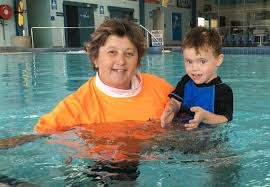Understanding your next step in water safety training
Why water safety isn’t optional in Australia
Every summer, Australians flock to the coast, rivers, and backyard pools. But behind the fun lies a stark reality: water can turn dangerous in seconds. Last year alone, over 280 people drowned in Australian waterways. Most incidents occurred within 10 metres of safety — often in front of friends or family who didn’t know what to do.
That’s why water safety courses aren’t just for professionals. They’re for parents, teachers, teenagers, hospitality staff, gym instructors — anyone who might find themselves near water, which in Australia, is just about everyone.
What does the STA Level 2 qualification actually cover?
The STA (Swimming Teachers’ Association) Level 2 Award is a benchmark certification for aspiring swimming instructors and water safety professionals. But it’s also one of the most practical training courses available for those wanting to strengthen their personal or community response to water emergencies.
This course covers:
- Essential swimming techniques and stroke refinement
- Safe supervision of swimmers in both shallow and deep water
- How to identify high-risk behaviours and prevent incidents
- Rescue skills and basic life support (including CPR)
- Creating a safe learning environment in pools or open water
For Australians looking to teach or supervise water activities, the STA Level 2 Award is a formal stepping stone — often taken alongside or after completing a certified water safety course.
Who should enrol in a water safety course?
Contrary to popular belief, these aren’t just for lifeguards or swimming coaches. A water safety course is ideal for:
- School staff responsible for excursions or swim days
- Parents with young children or backyard pools
- Youth leaders, camp organisers and scout instructors
- Fitness professionals offering hydro-based classes
- Workers in aquatic facilities, resorts, or cruise lines
Anyone who lives in a beachside suburb or travels regionally knows how fast an incident can occur. Training arms you with more than just techniques — it gives you the mindset to stay calm, assess danger, and take control.
The course structure: theory meets action
One of the strongest aspects of any good water safety course is the balance between theoretical knowledge and hands-on experience. Expect a mix of:
- On-site pool training
- Group demonstrations and supervised rescues
- Emergency simulations with live feedback
- Online or workbook-based theory components
Most courses, including the STA Level 2 Award, are completed in under 40 hours and meet international aquatic safety standards.
Real-world scenarios: What training helps you handle
Imagine these scenes — and ask yourself what you’d do.
- A toddler slips into a resort pool while no one is watching
- A swimmer gets caught in a rip at a patrolled beach, but you’re closer than the lifeguard
- A class excursion turns chaotic when a student starts panicking mid-lap
Each of these situations can happen in seconds. Your response could be the difference between rescue and tragedy. That’s the kind of real-world preparation a water safety course is designed to deliver.
Certification that opens doors
Many employers now treat water safety certification as a must-have, not a nice-to-have. If you’re in child care, sport, fitness, or hospitality — it’s a box you’ll need to tick.
The STA Level 2 Award specifically qualifies you to:
- Lead learn-to-swim sessions for children and adults
- Assist in school programs or community swim classes
- Supervise water-based recreational activities safely
- Begin your career as a professional instructor with further training
Combined with a water safety course, this qualification adds credibility to your resume and gives employers confidence that you’re ready for responsibility.
Where to start and what to expect
Courses run year-round, with options to complete training on weekends or intensively over a few days. Some providers offer blended learning — part online, part in-person — which suits busy professionals and students.
You’ll typically need:
- Basic swimming ability (you don’t have to be elite)
- Fitness to perform pool-based rescues
- A Working With Children Check (for instructional roles)
- A willingness to engage — these aren’t passive, sit-back sessions
Check your local aquatic centre or council website for upcoming programs. Or refer to this comprehensive training framework by the Royal Life Saving Society — it maps out your best pathways based on age, role and location.
Why now is the right time
Drowning doesn’t discriminate by age or ability. Even experienced swimmers can get into trouble if fatigue, weather, or crowd distractions are at play.
A water safety course is one of the most practical, empowering investments you can make — not just for your career, but for your peace of mind. Whether you live near the ocean, run school sports days, or just want to protect your family, training gives you the skills and the confidence to act when it matters most.
And with the STA Level 2 Award, you’re not just learning to swim — you’re learning to save.
Final thoughts
Water skills aren’t a luxury in Australia — they’re a necessity. From rip currents to pool parties, we’re surrounded by risk, but also opportunity. With the right training, you won’t just be prepared — you’ll be capable. Find a water safety course, level up your training, and become the person others can rely on when it counts.

